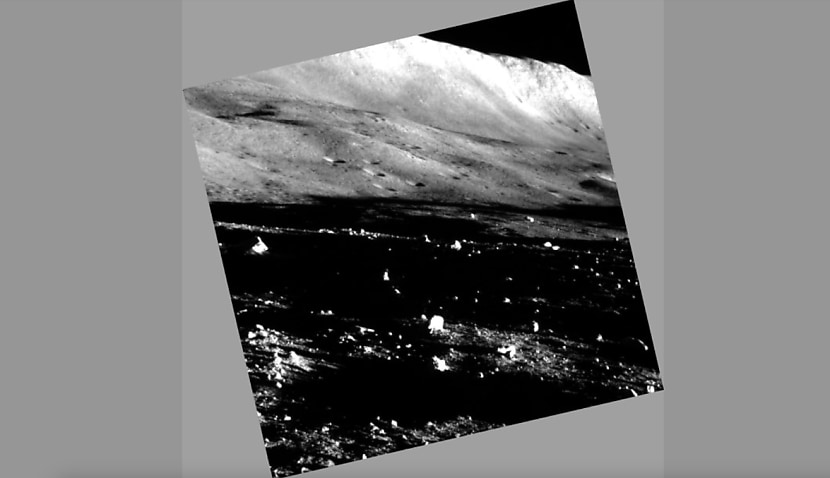
The Slim spacecraft has just entered a two-week “dormancy period” to coincide with the end of the lunar day.
However, there is a chance it could come back to life when the sun returns to view, and its solar panels are able to recharge the spacecraft once again.
Unlike Earth, the Moon spins once on its axis every 29.5 “Earth days”, meaning two weeks of daylight are followed by two weeks of darkness – opening up the potential of another comeback.
Project leaders have, though, admitted that Slim was “not designed for the harsh lunar nights”, meaning the device could have seen its last action on the lunar surface.
Before it powered down, JAXA posted a final photo of the Moon, taken before dusk (above).
It comes after Slim touched down on its nose earlier last month but ended up in a position that meant its panels faced west and, therefore, away from the sun at that point.
The incident forced project leaders to run the device entirely on battery power, before putting it into a first temporary hibernation when the charge hit 12 per cent.
Moon missions usually attempt to land early in the lunar day, when the sun rises from the east, giving two weeks of illumination before it sets in the west for two subsequent weeks of darkness.
When sunset occurred early on 31 January, the team were able to power it back up for a second time.
Despite Slim’s early power issues, it still achieved its main objective of achieving a precise landing, touching down 55 metres east of its original target.
Previous international missions have traditionally aimed for a landing zone of several square kilometres.
“The big objective of Slim is to prove the high-accuracy landing – to land where we want on the lunar surface, rather than landing where we can,” said Yamakawa Hiroshi, chief executive of JAXA, before the touchdown.
The Slim mission – or Smart Lander for Investigating Moon – aimed to land on a sloped rim inside the 300-metre-wide Shioli crater.
It’s been nicknamed the “Moon Sniper” for its goal of landing so close to its target point.
Slim also sent back an early photo of its own bodged landing, taken by a baseball-sized robot called Sora-Q, which was successfully ejected moments before the touchdown.
Not only did Sora-Q move on the surface to take the photo, but a second rover, Lev-1, managed to hop.
“The accomplishment of Lev-1’s leaping movements on the lunar surface, inter-robot communication between Lev-1 and Sora-Q, and fully autonomous operations represent groundbreaking achievement,” said Japan’s space agency, JAXA.
“It would be regarded as a valuable technology demonstration for future lunar explorations, and the acquired knowledge and experience will be applied in upcoming missions.”

Adam Thorn
Adam is a journalist who has worked for more than 40 prestigious media brands in the UK and Australia. Since 2005, his varied career has included stints as a reporter, copy editor, feature writer and editor for publications as diverse as Fleet Street newspaper The Sunday Times, fashion bible Jones, media and marketing website Mumbrella as well as lifestyle magazines such as GQ, Woman’s Weekly, Men’s Health and Loaded. He joined Momentum Media in early 2020 and currently writes for Australian Aviation and World of Aviation.
Receive the latest developments and updates on Australia’s space industry direct to your inbox. Subscribe today to Space Connect here.









